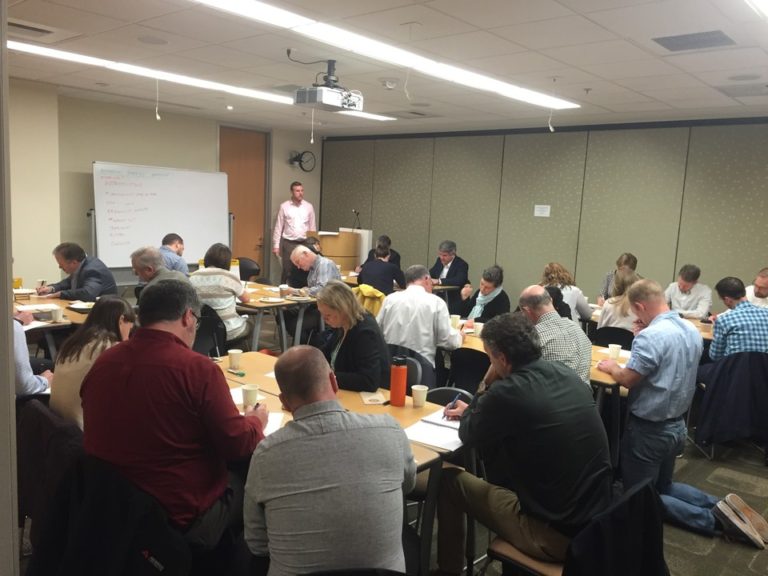John Kotter is one of the leading authors on change. Throughout my career, I have enjoyed, implemented, and recommended a number of his works to teams, friends, and colleagues. One of his works that exemplifies one of the workplace’s dilemmas is XLR8, where Kotter discusses how a practical, logical change management approach can be wildly more successful when you accept and respect the fact that social networks are way more powerful than any change management implementation plan or process. By coupling the two together, the likelihood change will stick is exponentially better. The simple theory is that by embracing people throughout the organization who are champions of the change initiative, this proves to be a stronger approach than top down driven change.
What if you took Kotter’s thinking and applied it to teams, workgroups, and business units? For example, if you were to look at your own week and all the stuff you have to do, what percentage of that stuff is the stuff you look forward to doing? Actually like to do? Lose track of time doing? This is the fun stuff, the stuff that you really get engaged in – and if you got lucky, you are in a job where your duties and responsibilities line up well with what you actually do. If you are like (according to Gallup) 70% of the workforce, your job is mundane and boring, and most of your job is stuff that doesn’t get you excited but you have to do it anyway. Kotter’s approach to change management could be an insight to changing what you do and how you engage.
Let’s try a very simple application – what if you were to take the team you work on and at your next meeting, put all the stuff everyone in the room has to work on for the next two weeks on the whiteboard. Just list the tasks, not the people who are responsible. Then, once the list is generated (and it’ll likely be very long), what if you ask “who wants to do what?”. Think about that – as a team, you collectively are responsible for doing a bunch of stuff. What if instead of roles, you look at the work required, then assign it based first on who actually wants to do what work? How cool would that be? Some people could shed the stuff they despise, while picking up work they enjoy. The likelihood for work that truly engages people gets self-assigned to people who actually want to do the work goes up drasticly, just like Kotter’s approach to change management.
Of course, this is a departure from norms – your work is dictated by your job description, which is nice and orderly. The hierarchy spread work and responsibilities, drives accountability, and allows the machine to function. Also makes people feel like a cog. I don’t know about you, but I’ve been a cog in the machine before and I really don’t like how it feels. Yet structurally it makes logical sense – and I absolutely agree. Though in our age of disruption, innovation, and other business buzzwords, it doesn’t help drive those buzzwords into action.
Isn’t that the goal? Putting things into action? Getting things done? With energy, excitement, and risk? Do you work in an environment that says things like “we want to innovate” but unoficially says “don’t screw up?” Well, to quote a great line from Captain Mancuso in The Hunt for Red October, “now there’s a contradiction in terms.” How can we innovate if we can’t take risks? How can we take risks if we can’t fail? It’s like those meetings that don’t have time for brainstorming, wandering, and meandering – not every meeting needs to have those, but if all we are is efficient and effective, when does the human get to show up? One extreme would be the logical structure scheduling 15 minutes each week for “innovation time” and another 15 minutes for “mandatory fun.” Efficiency to the max!
People are people – just like you and me. Find what makes yourself and others get engaged, and figure out ways to do those things more often. What if you you were able to work on the stuff you liked? Could you find the courage to wade into exploring what engages you and those around you?


 This made a lot of sense to me, a few years back when I read it for the first time. Since then, I’ve applied the same thought process to team formation and work units. In other books and articles, we keep hearing about shaking up roles, no stripes at the table, and constantly innovating – which for us as humans is exciting at first but then very, very uncomfortable in practice. We actually prefer job descriptions, processes, and policies cause they tell us what to do, they keep us safe in our box, and they give us a sense of job security.
This made a lot of sense to me, a few years back when I read it for the first time. Since then, I’ve applied the same thought process to team formation and work units. In other books and articles, we keep hearing about shaking up roles, no stripes at the table, and constantly innovating – which for us as humans is exciting at first but then very, very uncomfortable in practice. We actually prefer job descriptions, processes, and policies cause they tell us what to do, they keep us safe in our box, and they give us a sense of job security.